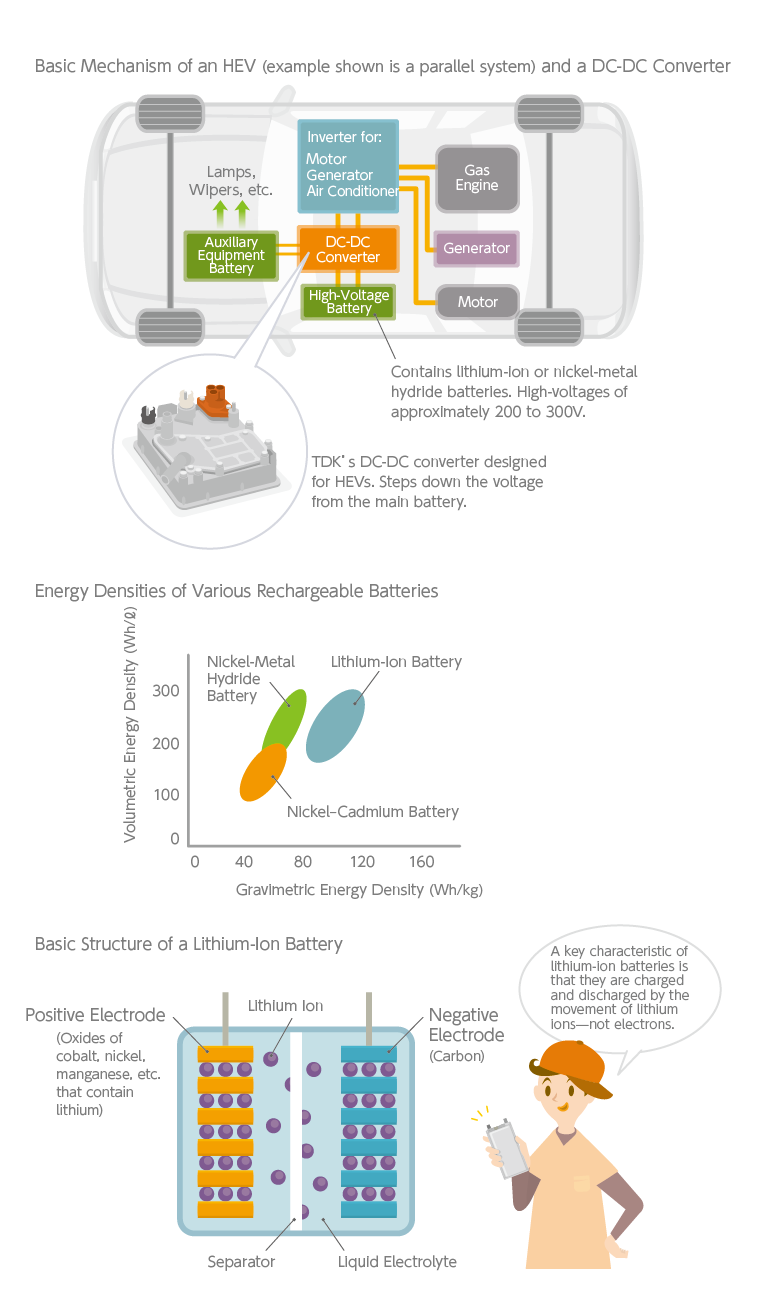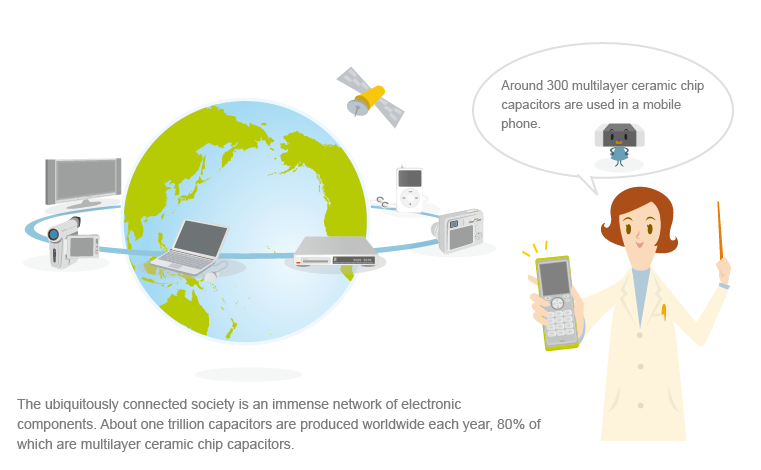The World of Power Electronics
Part 9: Electronic Components that Enable the Transfer of Energy in Switching Power Supplies

If the engine is the star player in a car, the transformer is the star in a power supply. Large, heavy transformers used in conventional linear power supplies have been replaced by smaller, lighter versions in switching power supplies. Switching power supplies also feature dramatically superior energy conversion efficiencies. It would be no exaggeration to say that the transformer’s design determines the performance of a power supply.
Coils, like capacitors, can also store energy
The food we consume is stored in our bodies as glycogen and fat, later used for muscle and brain activities. In electronic devices, capacitors and coils (inductors) play the role of temporarily storing energy. One basic function of a capacitor is to store an electric charge. There are simple DC-DC converters that comprise just a few capacitors and an IC. They convert voltage by using an IC to switch between charged capacitors, and are known as the charge pump type. They power the backlight of a mobile phone, for example. While simple, they have difficulty outputting large currents, and are not very efficient. This is why small DC-DC converters based on coils (power coils and power inductors) are widely used in cell phones. Let’s take a look at the reason a coil can store energy.
Capacitors and inductors have opposite properties. Another basic property of a capacitor is that it blocks direct current while allowing alternating current to pass. A coil, on the contrary, allows direct current to pass smoothly but behaves like a resistor against alternating current. The underlying principle is electromagnetic induction. In reaction to a fluctuating current such as AC, a coil generates a magnetic flux which produces an electromotive force (voltage) that impedes the fluctuation. This phenomenon is called self-induction, and the measure of its strength is called inductance.
Coils used like resistors for alternating current are called chokes—a name derived from its “choking“ effect on current flow. The ballast found in a fluorescent light fixture is a type of choke. The moment the glow starter disengages after the light is turned on, the coil in the ballast releases all of its stored energy, illuminating the fluorescent tube.
A coil’s inductance is proportional to the number of turns of the wound wire and the magnetic flux that penetrates the coil. Soft magnetic materials such as silicon electrical steel, ferrite, sendust and amorphous alloys form the core of chokes. These materials absorb magnetic flux like a sponge in water, enabling higher inductance and smaller sizes. The saturation magnetic flux density value indicates how much magnetic flux it can absorb, and the magnetic permeability value indicates how easily magnetic flux can be absorbed.
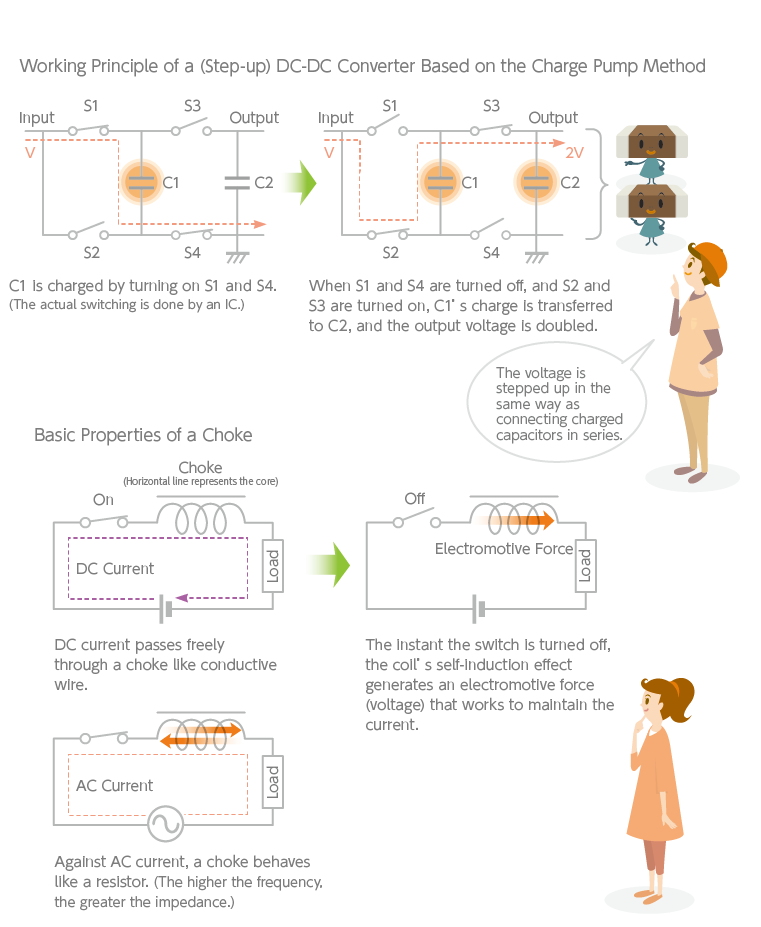
Why magnetic saturation of the core must be avoided
Iron-based core materials such as silicon electrical steel are widely used for electromagnets, motors, and the iron cores of transformers on electrical poles because of their high saturation magnetic flux densities. In switching power supplies, however, metallic materials cannot be used for choke and transformer cores. This is because metallic cores have low electrical resistance, which results in large energy losses from heat generation where high-frequency currents of several tens of kilohertz or more are generated, such as switching power supplies. This phenomenon is referred to as iron loss. Instead, materials like ferrite, sendust and amorphous alloys are used.
Magnetic saturation is a critical phenomenon in coils wound on a core. In the curve that describes the magnetization process of a magnetic material, there is a unique S-shaped loop known as the hysteresis (B-H) curve. The slope of the loop represents the magnetic permeability; the higher the permeability of the core, the faster it rises with a small current.
Toroidal (donut-shaped) cores are commonly used for chokes. Toroidal cores have a closed magnetic path, so there is no flux leakage around the core. However, as the current flowing through the wound wire is increased and the magnetic field exerted on the core intensifies, the flux density inside the core eventually hits a ceiling. This represents the saturation magnetic flux density value. If a current beyond the saturation density is passed through the coil, the switching element risks destruction. This is avoided by placing a gap in the core. Since the permeability of air is much smaller than that of the core material, a gap raises the magnetic resistance, and saturation can be prevented. This also allows the reduction of the choke’s size. However, since some magnetic flux will leak from the gap, measures must be taken to prevent it. If the flux leakage couples magnetically with other components, it can cause noise and other problems.
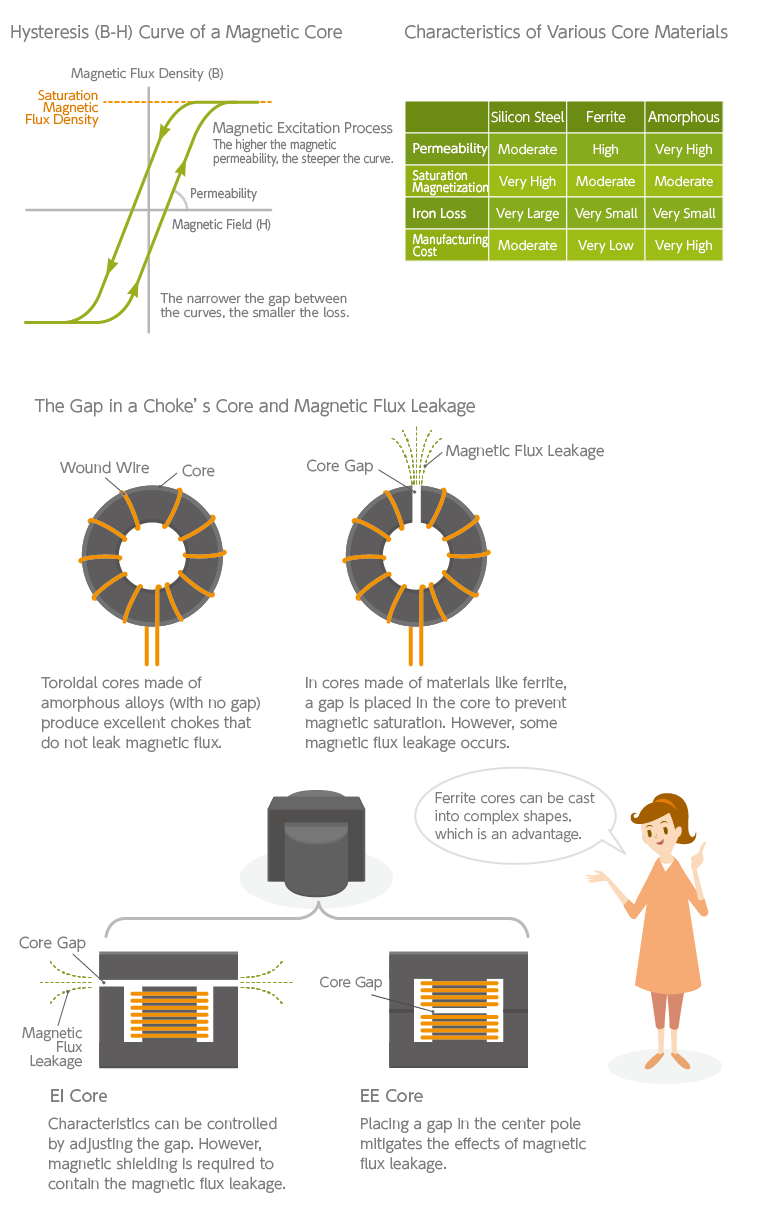
Isolated DC-DC converters use two different methods: on-off and on-on
A transformer is another power component that utilizes electromagnetic induction. When a change in the magnetic flux in the primary wound wire is propagated through the core to the secondary side, an electromotive force is generated in the secondary wound wire (known as the mutual induction). Most medium- to large-capacity DC-DC converters use a transformer to electrically isolate the input and output sides, which is why they are also called isolated types. Isolated DC-DC converters are broadly classified into the on-off and on-on types, depending on how energy is transferred from input to output.
The on-off method transmits energy to the output side when the switching element is off, and the on-on method transmits energy when the element is on. This sounds confusing—but it can be better understood by studying the difference between how transformers and chokes work.
For example, most isolated DC-DC converters with an output of 50W or less use the on-off method, and are called ringing choke converters (RCCs) or self-excited flyback converters. When switched on, the current in the primary wound wire stores excitation energy in the transformer core and is held there. As soon as it is switched off, the coil’s self-induction generates an electromotive force in the wound wire, releasing the energy into the output side. RCC is a design that creates oscillation by sending the current in the base wound wire on the primary side of the transformer to the switching element. Unlike the separately excited type which has a built-in oscillation circuit, RCC requires fewer parts but risks damage to the switching element if the transformer’s core becomes magnetically saturated. To prevent this, a transformer with a gap in the core is used.
DC-DC converters like forward converters, push-pull converters, half-bridge converters, and full-bridge converters—all of which use the on-on method—transfer energy from input to output side through a transformer when activated. Since the excitation energy required is small, no gap in the transformer is necessary. The choke on the secondary side plays a vital role in this method. When turned off, the current in the transformer’s wound wire terminates, and the energy stored in the choke is released.
It is evident how transformers and chokes are indispensable players in transferring energy from the input to the output of a power supply. TDK offers an extensive lineup of ferrite core materials with low core loss and excellent electrical characteristics. The core shapes, wound wire patterns and shield designs are optimized using advanced magnetic simulation technologies. We strongly support the miniaturization, weight reduction and high efficiency of power electronics.
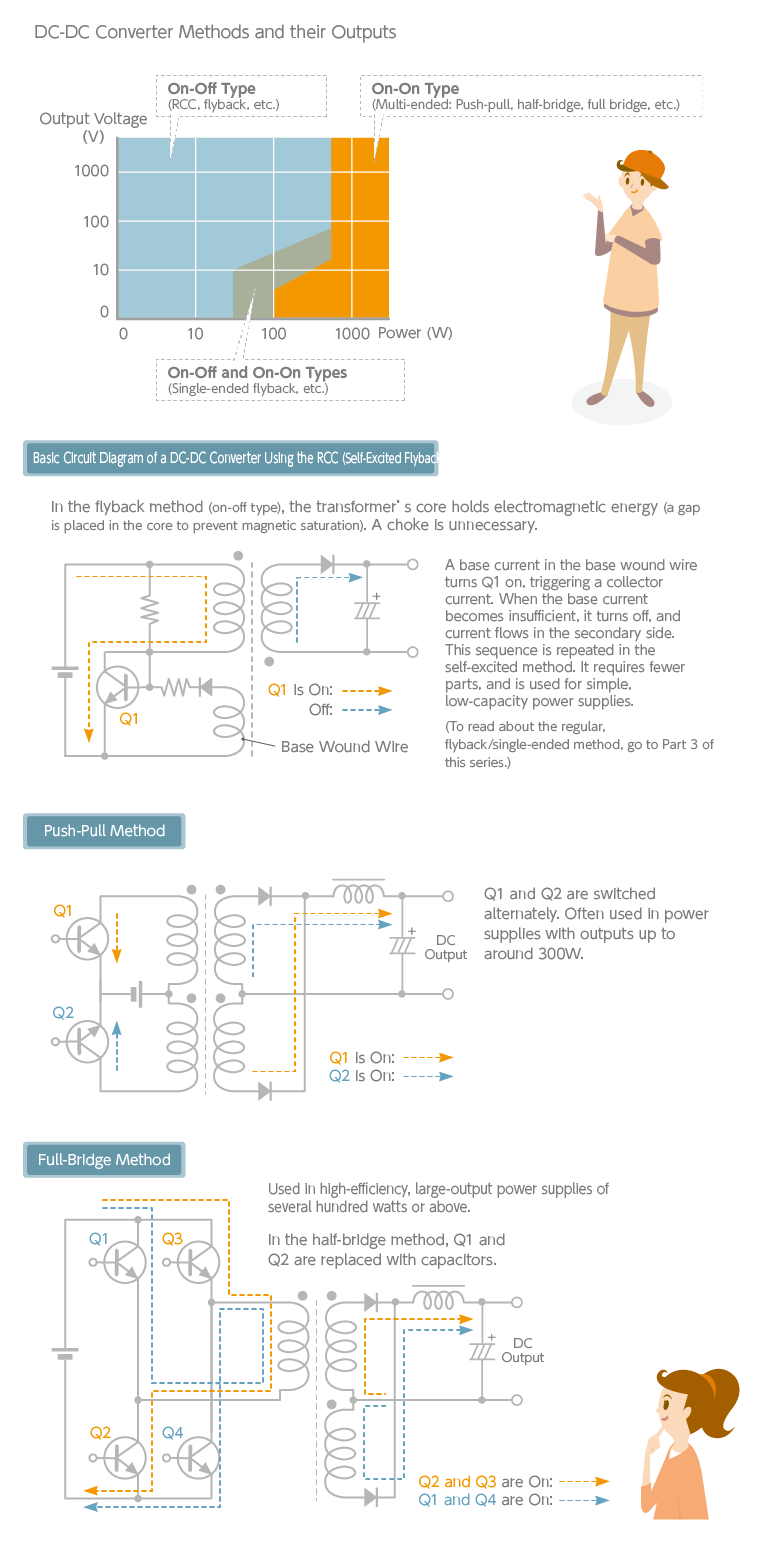
TDK is a comprehensive electronic components manufacturer leading the world in magnetic technology



